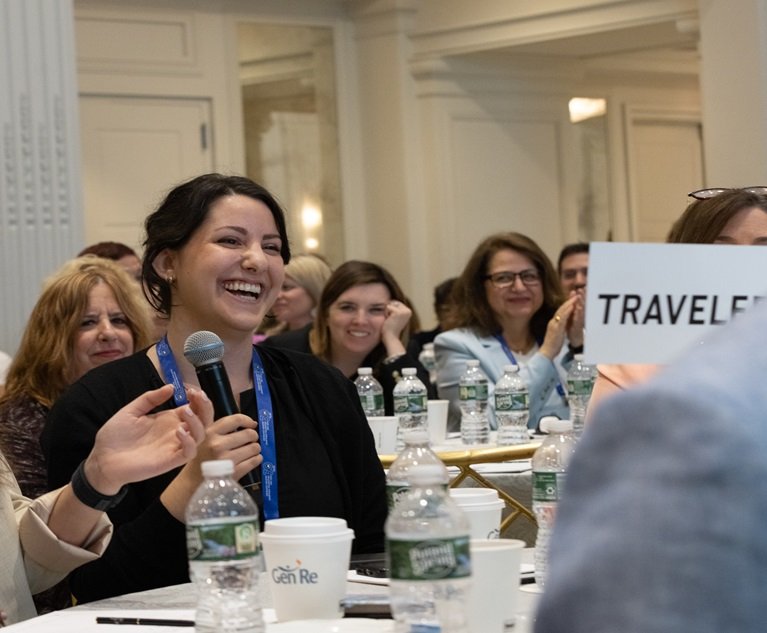HITTING a clean drive down the middle of the fairway and judgingthe distance to the green are skills that don't come naturally tomost people. Indeed, the skill-building work required before onebegins golfing gives rise to a phrase that describes the beginningduffer: You play other sports, but you "take up" golf. Many who doso find that they enjoy not just playing the game, but also workingon their basic golf skills. Hence the popularity of driving rangesand facilities that offer putting and chipping greens, as well asprivate lessons with instructors.
|Shortly after our agency was founded, we decided to "take up"golf course and country club insurance as a specialty niche. Inresponse to a mailing we sent, a newly opened course near our EastTexas office expressed interest, and we wrote a package policy forit.
|Like a diligent student of the links, we've been able to developour "game" from there, gaining expertise and building a successfulbook within this niche. We currently have 23 golf course andcountry club clients in the Houston, Dallas and Austin areas, aswell as two courses in Indiana.
|Making the tour
|We market our program through direct mailings, and a growingportion of our new business comes from referrals. We maintainvisibility in the community through membership in the local chamberof commerce, and we have received some inquiries from visitors toour Web site (www.sec-ins.com). On occasion, localclubs host vendor tournaments, and we always sponsor a hole atthese events.
|Our clients include a nearly even mix of private country clubsand public, daily-fee courses, with a few semi-private courses aswell. (A semi-private course is open to the public but also offersmemberships, which usually involve payment of a monthly fee inexchange for a discount on prepaid rounds of golf.)
|Golf courses in our area these days are almost "overbuilt," sothere's certainly no shortage of prospects. We use a multitude ofonline databases not just to find prospects, but also to screen ourprospect list. We shy away from courses owned by municipalities,for instance. We initially might be interested in a course 50 milesfrom our office. When information we glean from a database shows usthe prospect is a nine-hole course with just 5,000 rounds played ayear (a relatively low number), we might decide such a prospect isnot worth a 100-mile round trip.
|Country clubs may desire higher liability coverage limits thansome daily fee courses, and the clubs have a few exposures thatother types of courses don't. For the most part, however, ourprogram addresses the same basic liability exposures for all of ourclients:
|o General liability: We recommend a GL limit of no lessthan $1 million per occurrence/$2 million aggregate, with anumbrella policy of at least $1 million.
|o Liquor liability: We suggest at least $1 million ofliquor liability. This is especially important for country clubs,which may host such events as wedding receptions. We stress theimportance of ensuring that only licensed employees serve alcoholat these events, and that they comply with all state alcoholregulations.
|o Directors and officers insurance: Private clubs oftenneed at least $1 million of D&O coverage. If a club's directorsare involved in writing the club's employment manual, they may benamed in an employment-discrimination lawsuit. This coverage alsoprovides protection if someone alleges illegal discrimination inthe selection of club members.
|o Pollution liability: Herbicide and pesticideapplicator liability presents a significant exposure for golfcourses. Typically, just one or two employees at a course arestate-licensed as applicators, and clubs should ensure that onlythose employees have access to the chemicals. We advise our clientsto purchase at least $1 million of coverage, which would protectthem against such claims as contamination of ground water becauseof improper chemical application.
|o Auto liability: We recommend $1 million in coverage.Some clubs own an auto that may be used by any of severalemployees, in which case the club needs auto liability coverage. Ifa club does not own its own vehicle, we suggest a similar amount ofhired/nonowned auto coverage. All of the programs we work withprovide coverage for valet service, which clubs may offer when theyhost special events.
|The property coverages address the course itself, theunderground sprinkler systems, all the buildings on the grounds andtheir contents, any other structures on the course, and theequipment used to maintain the course. Some important details ofthat coverage are listed below:
|o Building and contents: We provide coverage for everybuilding on the grounds-the clubhouse, "halfway houses" on thecourse, pump houses, maintenance buildings and cart barns, forexample. Coverage limits obviously vary with the value of thebuildings: One of our daily-fee courses has a building and contentslimit of $1.4 million, and we have a country-club client with a$4.3 million limit. We suggest a deductible of at least $1,000, butsome of our country club clients elect deductibles as high as$10,000.
|We like to make sure that every building at a course is includedin the coverage. We've found that some of our new clients havefailed to include coverage for a few buildings such as pump houses(which contain the pumps powering the underground sprinklersystem), either mistakenly or because they were trying to save onpremium. We can point out that we've had claims in which lightninghas struck pump houses, resulting in as much as $40,000 indamage.
|o Playing surface: Coverage for the course itself,walking paths and cart paths, the underground sprinkler system, andother structures on the course is provided through an outdoorproperty extension. We recommend at least $250,000 for thiscoverage, which also applies to such items as swimming pools andtennis courts.
|Typical claims include weather and vandalism. We recentlyhandled a claim, for instance, involving hail damage to a puttinggreen. We've also seen instances in which following a rain storm,when the surfaces are soft, vandals steal a golf cart at night anddrive around the course, creating deep ruts.
|o Equipment coverage: Golf carts and equipment used tomaintain the course are covered under an inland marine schedule. Ofcourse, none of the items on the schedule can be licensed for useon a public road. Extending our previous example, we've had a claimin which vandals finished off their work by depositing a stolengolf cart in a lake on the grounds. We recommend that our clientshave floodlights around the cart barn and that they install analarm on the barn.
|o Business income coverage: The standard 24-hourwaiting period is usually imposed for a business-income claim. Suchclaims often don't present as serious a loss for golf courses asthey might for other businesses. If the clubhouse burns down, forexample, the club may lose some income. But while it is beingrebuilt, they will quickly erect a tent, or take other steps, tokeep operations going. A more typical claim would be a lightningstrike that knocks out the power at a country club, preventing itfrom hosting a social event such as a wedding reception.
|o Special events: Most of the programs we work withinclude coverage for tournaments and other special events, whichoften involve the work of such outside contractors as a valetparking service (if the insured doesn't already provide it) or acompany that builds the bleachers for a tournament. The insuredmust obtain evidence of insurance from all such contractors.
|Two times the fun
|We meet twice with prospects before writing a proposal. I usethe first meeting, usually a 30-minute sit-down with a club'sgeneral manager, as a "partnering meeting." I present the basics ofour program, but I also use the time to gauge the prospect'scommitment to working with us. It takes a lot of work to prepare agood submission, and we want to know the prospect is willing towork with us before we invest our time.
|At the end of the first meeting, I give the prospect a list ofthe information I'll need at the second meeting, which we use as arisk-management audit. That list includes a copy of the currentpolicy, a complete equipment schedule, the last 12 months offinancials, and loss runs for the previous five years.
|At our second meeting, we tour the prospect's grounds, takepictures and fill out a building and property information form. Wesometimes find that prospects have left buildings off theirprevious policies without knowing it. We've created our ownsupplemental questionnaire, to collect detailed information on thedaily operations-for instance, how often the kitchen hood vents arecleaned, where any chemicals are stored and if they are locked up.We talk to key personnel, such as the head chef and the headgroundskeeper, in addition to meeting with the club's generalmanager.
|Some of our prospects haven't had an insurance program before,and have covered their exposures piece-by-piece. We sometimes findgaps in their coverage, and we often win a long-term client bysaving them as much as 15% on premium by using the programapproach. Some of the prospects are grateful just to have some ofthe coverage we offer-such as coverage for the playingsurfaces-that they haven't had before. In addition to FairwayUnderwriters, our program underwriters include Bollinger Insurance(the program administrator for AIG), Safeco and Venture InsurancePrograms (Venture administers the Preferred Club program on behalfof Chubb, ACE and USLI).
|Signing the scorecard
|The information we get from a client also helps us decide whichof our programs is the best fit, which increases the success of oursubmissions. When I submit an application, I include a report thataddresses each covered exposure with a separate one-page summary,pointing out why the prospect is a good risk. I might describesecurity measures taken to protect golf carts, for instance, or howthe kitchen staff keeps the kitchen clean and well-maintained.Lately, some carriers have been inspecting the financials moreclosely and are less willing to accept insureds who are strugglingfinancially. This does not affect private clubs as much as publiccourses, because private clubs can always assess their members toshore up the financial outlook.
|Offseason moves
|One of the most frequent complaints we hear from prospects abouttheir current insurance agent is that they don't hear from anyoneuntil renewal time. We make it a point to visit the client at leastonce during the year, just to keep in touch, and we visit again atleast 60 days before the renewal date. We also send quarterlye-mails to all our clients, discussing risk management measures andproviding other useful information.
|During our first meetings and throughout the policy period, wealso help our clients institute risk-management programs, whichwe've found most of them don't already have. We keep detailedequipment schedules for them, and when they notify us that they'vepurchased new equipment, we provide them with updated schedules. Ifa client constructs a new building, we visit the course, take aphoto of the structure, and put it in their file.
|We give our clients a 25-page risk management handbook we'vewritten specifically for golf courses, and we suggest they gothrough the manual quarterly, with a different group of employeeseach time. The manual includes checklists of safe practices such aschecking electrical circuits, keeping clutter out of hallways andnot leaving oily rags in a maintenance building. We alwaysrecommend a no-smoking policy in maintenance buildings, and we'resurprised at how many of our clients implement that policy for justthe first time, at our request.
|Golf course and country club insurance has become the largestspecialty program we offer. Our clients come to value our expertisein identifying exposures and finding the best way to cover them; byproviding this service, we earn reliable relationships with clientsin an affluent niche. I may still have work to do on my slice, butour success with this program is in the bag.
Want to continue reading?
Become a Free PropertyCasualty360 Digital Reader
Your access to unlimited PropertyCasualty360 content isn’t changing.
Once you are an ALM digital member, you’ll receive:
- All PropertyCasualty360.com news coverage, best practices, and in-depth analysis.
- Educational webcasts, resources from industry leaders, and informative newsletters.
- Other award-winning websites including BenefitsPRO.com and ThinkAdvisor.com.
Already have an account? Sign In
© 2024 ALM Global, LLC, All Rights Reserved. Request academic re-use from www.copyright.com. All other uses, submit a request to [email protected]. For more information visit Asset & Logo Licensing.








